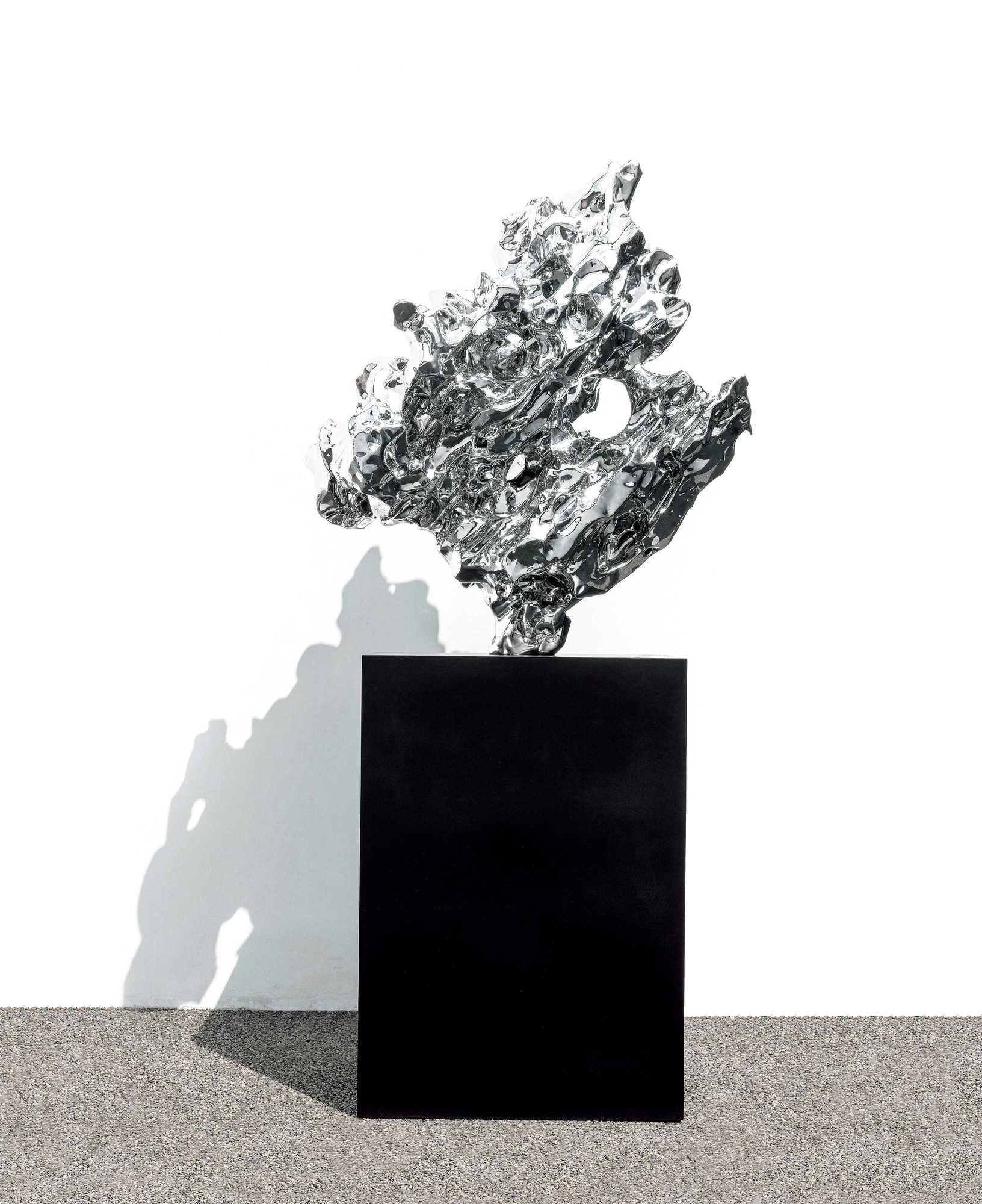Author: ZHAN WANG 展望
Size: 94×54×121cm
Signed and dated: Made in 2006
Estimate: 1,200,000
-1,600,000
Final Price: unsold
signed in Chinese and dated 2006
Edition: 3/4
Is realism a‘Artificial Rock’? (Excerpt)
Author/Jinan Yin
The series works of Artificial Rocks exhibit the acme and paradigm of artist Zhan Wang’s personal style, and demonstrate materiality which is not closely related to realism. The core concept of realism disappears with the absence of human nature; the self-sufficiency and the selectivity of‘related to me’ of objects recur among works.
Obviously, realism has been deducted to a specific production method in Zhan Wang’s stand, which effectively differentiate shape and texture of Taihu Stones and ordinary rocks. Through this way, the connection between Artificial Rocks and Chinese Literati culture has been weakened. The traditional and classic characteristics of shaped stainless steel are parasitic on the imaginary Artificial Rocks or Taihu stones, which purposefully broadens the space of misreading. Rockery stones belong to traditional Chinese Literati’s world, on the contrast, Artificial Rocks are artworks made by contemporary artist using stainless steel. Literati’s rockery stones are constructed from real rocks, even though they are‘unreal’ in volume and scale compared with real mountains. Zhan Wang’s‘Artificial Rocks’ are not only‘unreal’ in volume and scale, but also inauthentic in material, which give his works double inauthenticity. These rocks become artificial in every possible way. Compared with rockery stones, they are new forms of artificial rocks. From literati’s perspective, by imitating reality or inauthenticity, these rocks are‘ inauthentic rockery stones’ that deviate or deny the‘real rock’ in nature and the‘unreal rock’ in the literati world. Literati’s rockery stones can also be understood as‘human’s rocks’ or‘humanized rocks’, which has strong literary interest and philosophical meaning. This is a premise of naturing‘humanized rocks’. Zhan Wang’s‘Artificial Rocks’ are exactly this kind of‘humanized rocks’. Natural rocks experienced‘humanization’ process imposed by traditional Chinese literati to become literary and philosophical in meaning; combined with sense of amusing and playing. Zhan Wang’s Artificial Rocks demonstrate a process of getting rid of inherent literati taste, a new humanized process that eliminates old way of literati’s process of humanization. However,this demonstration does not turn‘Artificial Rocks’ into‘real’ rocks, but creates new forms‘unreal’ rocks with more inauthentic characteristics, although they preserve some literati aesthetics. Their presence relate to both literati’s‘rockery stones’ and real rocks form natures. They establish the imagination of traditional culture, and dispel tradition in the meantime. They subvert both the volume of the real mountain and the material of the rockery. This dual attitude is realized in dual ways: on the one hand, the precise production of‘realism’ is deployed, and on the other hand, the classicality advocated by the academism is utilized.
Zhan Wang applied habitual techniques normally depicting realistic portraits to humanized objects. He eliminates the cultural sense of rocks while dispels the potential realistic characteristic in himself. The former is conceptual dissolution, while the latter is historical dissolution. The dissolution of history bears more characteristics in Chinese contemporary art narration.
